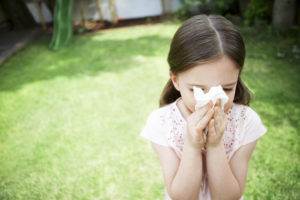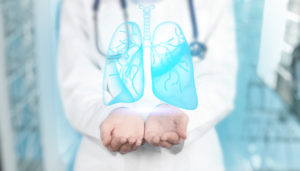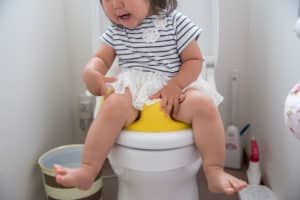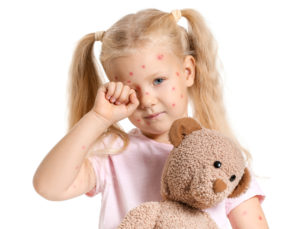For kids, childhood comes with a lot of mental, social, and physical changes. As you watch your little ones grow and cross their developmental milestones, it’s important to be aware that they could be at risk of one or more childhood diseases.
A good knowledge of these diseases would help you identify them if they occur. More importantly, you will be in a better position to prevent your child from developing any of them in the first place.
In this article, you’d find reliable info on 10 common childhood diseases; the causes, symptoms, and possible home remedies.
Read on to find out!
Table of contents
10 Most Common Diseases
1. Common Cold
Common cold as the name implies is really common. It is caused by a class of viruses that affect the upper respiratory tract. In fact, the common cold is so common that a child can get infected with a cold about five to eight times a year.
The Symptoms of the common cold include:
- Runny nose
- Watery eyes
- Cough
- Congested nose

Home remedies:
Keep your child hydrated with lots of fluids and juices containing low sugar. Juice options with high vitamin C content are preferable for this due to their immune-boosting ability. In addition, keep your child away from crowded areas and other children to prevent it from spreading. Bring your child to the doctor if symptoms persist or if the runny nose is accompanied by a high fever.
If the symptoms persist for more than five days, or you notice that your little one has a fever, please call your doctor to book an appointment.
2. Allergic Rhinitis
Allergic rhinitis is the most common chronic allergic disease in children. It is seen when your child constantly sneezes or has a runny nose. Most times, this is a response to certain triggers like dust, pollen, or fur.

Home remedies:
The easiest way to prevent allergic rhinitis is to avoid the trigger. Identify what triggers your child’s runny nose and put them away, or ensure your little one stays away from that location.
Consult your pediatrician if the symptoms persist or worsen, or if your child develops a fever.
3. Asthma
A child with asthma has sensitive airways that become inflamed when exposed to certain trigger factors. The common symptoms of an asthma ‘attack’ include wheezing, tightness or pain in the chest, difficulty in breathing, and persistent cough.
It is important to note that asthma is a childhood disease that may require emergency treatment and hospitalization. Once a diagnosis has been made, the doctor will prescribe medications for you to have on hand that can be used whenever an episode occurs. Many times, a special device called an inhaler will be provided to help your child breathe easier.
Home remedies:
Ensure your child uses his/her inhaler as instructed by the doctor. Furthermore, it is important to avoid the common asthma triggers such as dust, smoke, tobacco, animal fur, pollen, and stress.
If the symptoms persist or get worse, please contact your doctor immediately.
4. Sore Throat
Sore throats are a very common, and potentially painful condition in children that occurs when their throats become inflamed and sometimes appear red and swollen. A virus-induced sore throat often resolves in about 10 days without drug therapy. However, a sore throat caused by a bacterial (streptococcal) infection is more serious and requires antibiotic use.
This is called Strep Throat.
Strep throat cannot be diagnosed by just looking at the throat. A laboratory test is necessary to confirm the diagnosis. If the test comes out positive, your pediatrician will prescribe an antibiotic for your child.

Home remedies:
Giving your child a lot of fluids will ease the pain, and getting some rest will make him/her feel better. Furthermore, using a humidifier will increase the moisture in the air, which is also soothing. You should ensure that your child takes the antibiotics for the full course as prescribed, even if the symptoms subside or have gone away.
5. Bronchitis and Bronchiolitis
If your child is wheezing or breathing rapidly and is having trouble breathing, there’s a chance that the airways of his or her lungs have become infected. Either of the two large tubes (bronchi) or the smaller tubes (bronchioles) can become infected, and this is usually caused by a virus.

Home remedies:
Keep your child hydrated with enough fluids. You can also add juice, especially options that are rich in vitamin C. Also, avoid smoking around the child because tobacco smoke can worsen the symptoms.
Call your doctor immediately if you notice that little one is wheezing, lethargic, struggling to breathe, or refusing to eat.
6. Constipation
Sometimes, you may notice that your baby’s poo has become really hard. This happens when he/she is suffering from constipation. The major symptoms of constipation include a hard abdomen, irregular pooping, discomfort, and crankiness.
Most times, constipation happens when there is a change in your child’s diet.
Home remedies:
Speak with your doctor before trying anything to relieve your baby’s discomfort. For an older child, you can give a lot of water, foods rich in fiber, and vegetables.
7. Gastroenteritis
Usually, this is caused by a bacterial or viral infection from something your child ate or an infection in the bloodstream that gets into the stomach and intestines. Symptoms of a child suffering from gastroenteritis include nausea, vomiting, smelly and watery stool. Some others include abdominal pain, fever, and muscle aches.
Home remedies:
First, you need to replace lost water and salt. This is really important because vomiting and stooling lead to loss of body water and electrolytes needed for normal functions.

To do this, give your child fluids like water to keep him or her hydrated. Fruit juice can also help but avoid juice that contains milk. If symptoms persist, take your child to the doctor.
8. Seizures
Unconsciousness, stiffness, a sudden fall, and jerking arms and legs are symptoms of a child with a seizure. Other symptoms are a clenched jaw and rolling of the eyes back in the head.
While a seizure can be very scary, it is not necessarily a sign of significant damage to the brain. However, it must always be regarded as an emergency.
Home remedies:
Don’t restrain your child. Let the seizure run its course.
Also, don’t force anything into your child’s mouth, just make sure his/her airway is clear enough to prevent choking. Let your child sleep if he or she wants when the seizure is over.
Consult your doctor immediately.
9. Skin conditions
Children can suffer from a wide variety of skin conditions, especially eczema. Children with eczema usually have a family history of eczema and other related hypersensitive conditions like hay fever and asthma.
The obvious symptoms include a red, itchy rash on the limbs, face, or trunk. This is usually not contagious.
Home remedy:
Keep your child’s skin moisturized and use a topical steroid cream prescribed by a doctor. Give your child anti-itch (antihistamine) medication just before bedtime. This will help reduce the itch and help him or her sleep more comfortably.
Also, avoid common triggers such as a sudden change in temperature, animal fur, dust, tobacco, smoke, and stress. Bring your child to see the doctor.
10. Chickenpox
Chickenpox is a viral skin infection that mostly affects children. Usually, the rash appears over a few days and later becomes blisters. Symptoms include fever, itchy skin, and red spots on the face and body. The spots may leave a scar if they are scratched open and the scratched area becomes infected.

Although Chickenpox is usually mild, it can be very contagious. It is spread through direct contact or droplets in the air from an infected person.
Home remedies:
Inform your child’s school or childcare center and keep your child at home to prevent spread to other children. Trim your child’s fingernails to avoid scratching, you can also consider letting him or her wear gloves at night. Give your child cold baths to relieve itching.
Contact your doctor immediately, if you suspect your child has chickenpox.
Extra Precautions to Follow
Many of these childhood diseases are contagious. Take extra care in protecting and preventing your child from getting infected by other children.
If your child is affected, keep him/her at home to stop the spread. Finally, when one of your children is infected, ensure adequate precaution is taken to prevent other siblings from getting infected too. Read our other article on how to recognize RSV in babies
References
Kahabuka C, Kvåle G, Hinderaker SG (2013) Care-Seeking and Management of Common Childhood Illnesses in Tanzania – Results from the 2010 Demographic and Health Survey. PLOS ONE 8(3): e58789. Accessed from https://doi.org/10.1371/journal.pone.0058789 on 29th August, 2021.
Stephen Bernard Lambert, Robert S Ware, Anne L Cook, Frances A Maguire, David M Whiley, Seweryn Bialasiewicz, Ian M Mackay, David Wang, Theo P Sloots, Michael D Nissen, and Keith Grimwood (2012). Observational Research in Childhood Infectious Diseases (ORChID): a dynamic birth cohort study. BMJ Open. 2(6): e002134. Accessed from https://www.ncbi.nlm.nih.gov/pmc/articles/PMC3547315/ on 29th August, 2021.
Zhifei He, Ghose Bishwajit, Dongsheng Zou, Sanni Yaya, Zhaohui Cheng and Yan Zhou (2018). Burden of Common Childhood Diseases in Relation to Improved Water, Sanitation, and Hygiene (WASH) among Nigerian Children. International Journal of Environmental Research Public Health. 15(6), 1241. Accessed from https://doi.org/10.3390/ijerph15061241 on 29th August, 2021.

